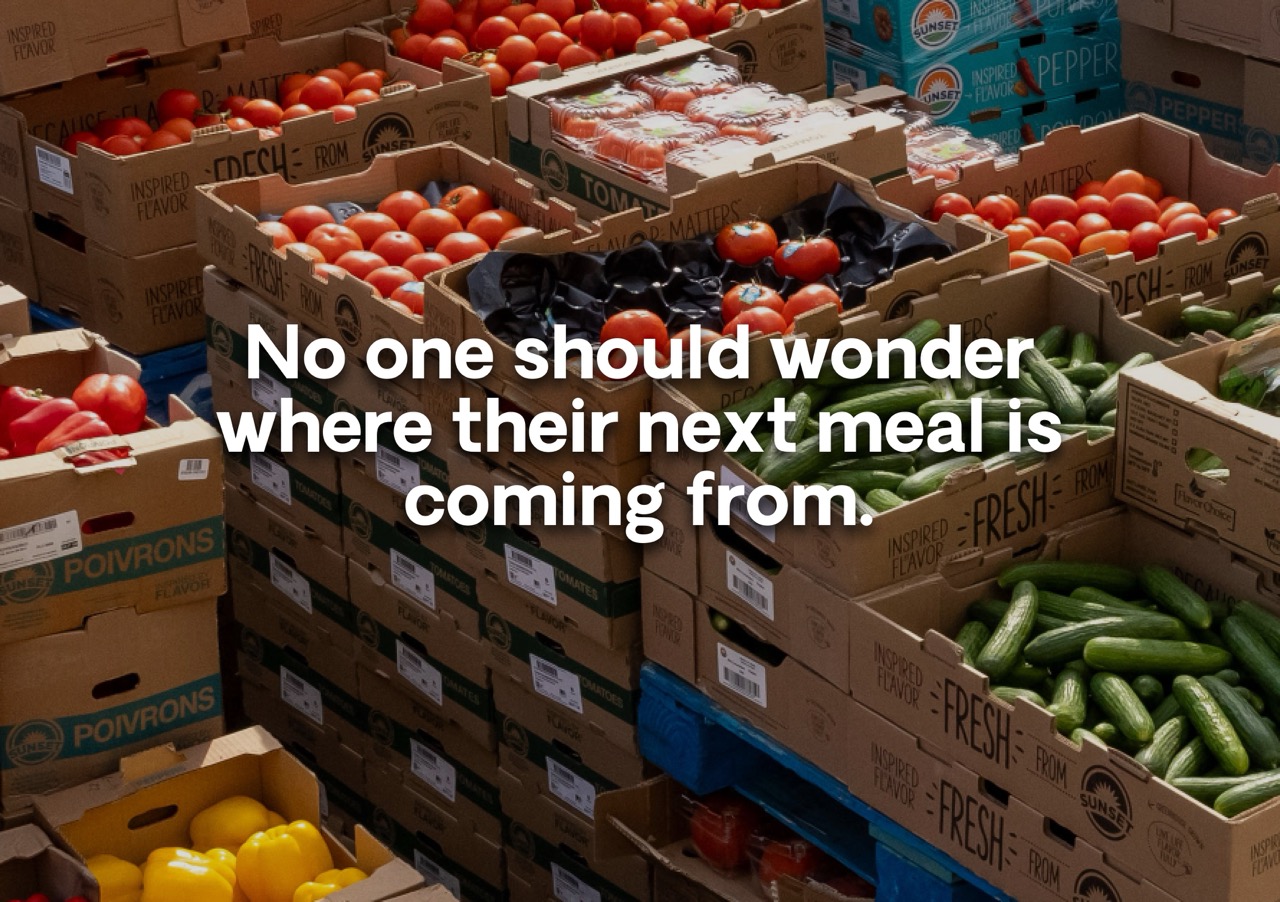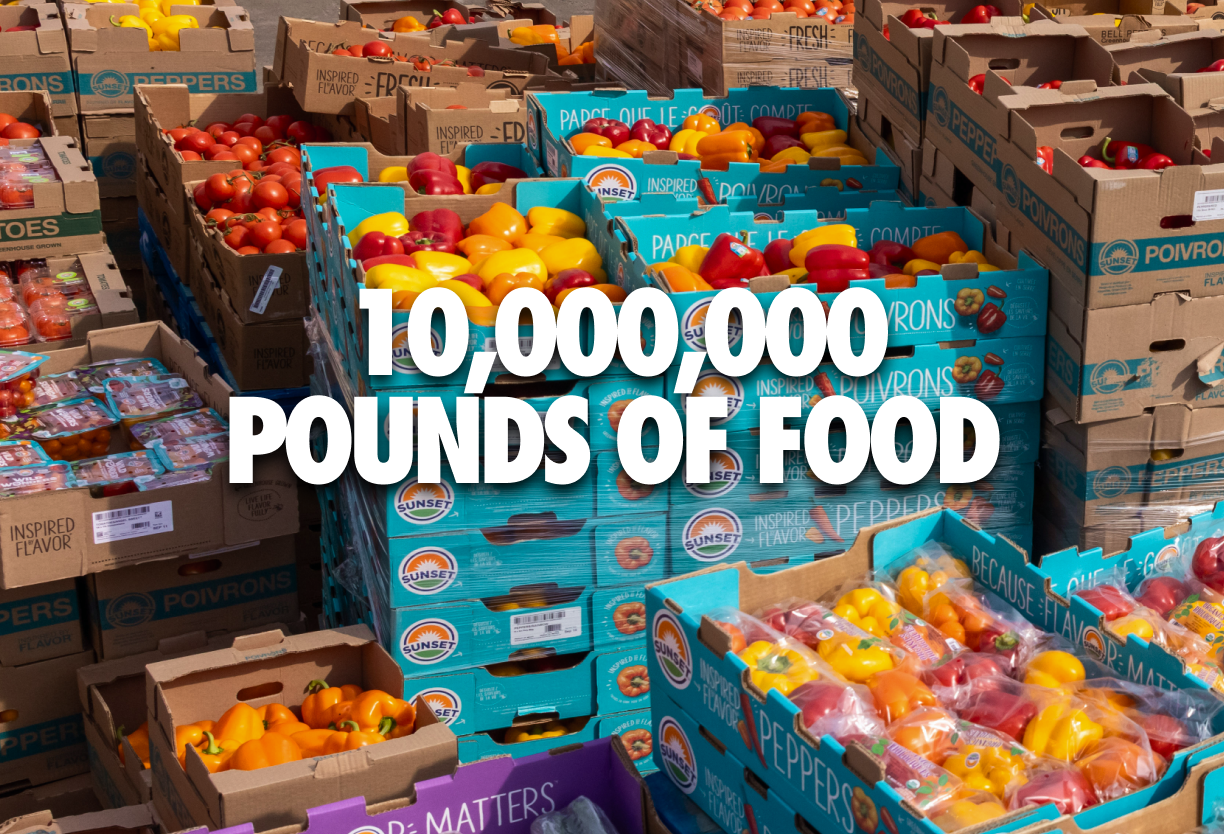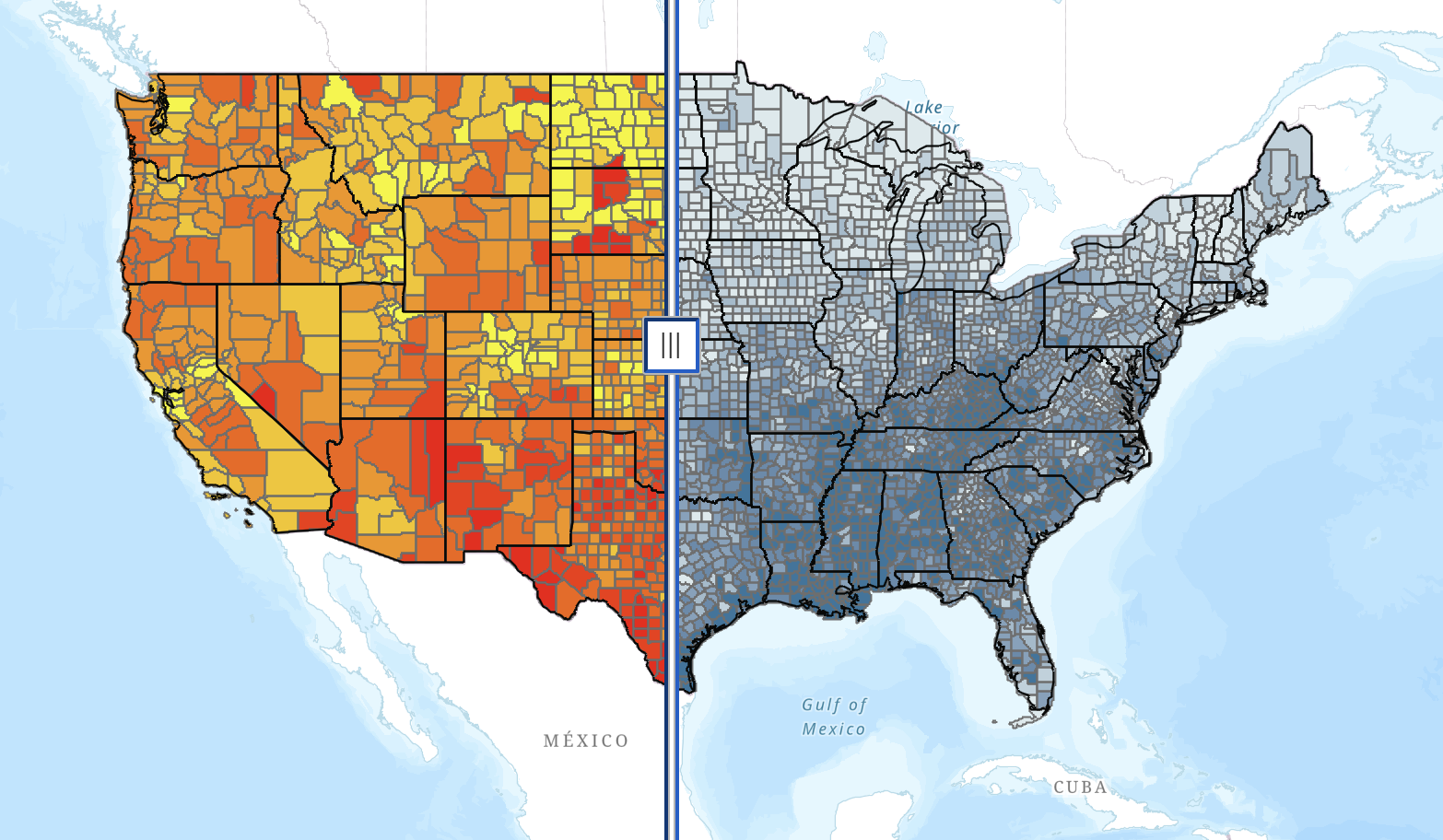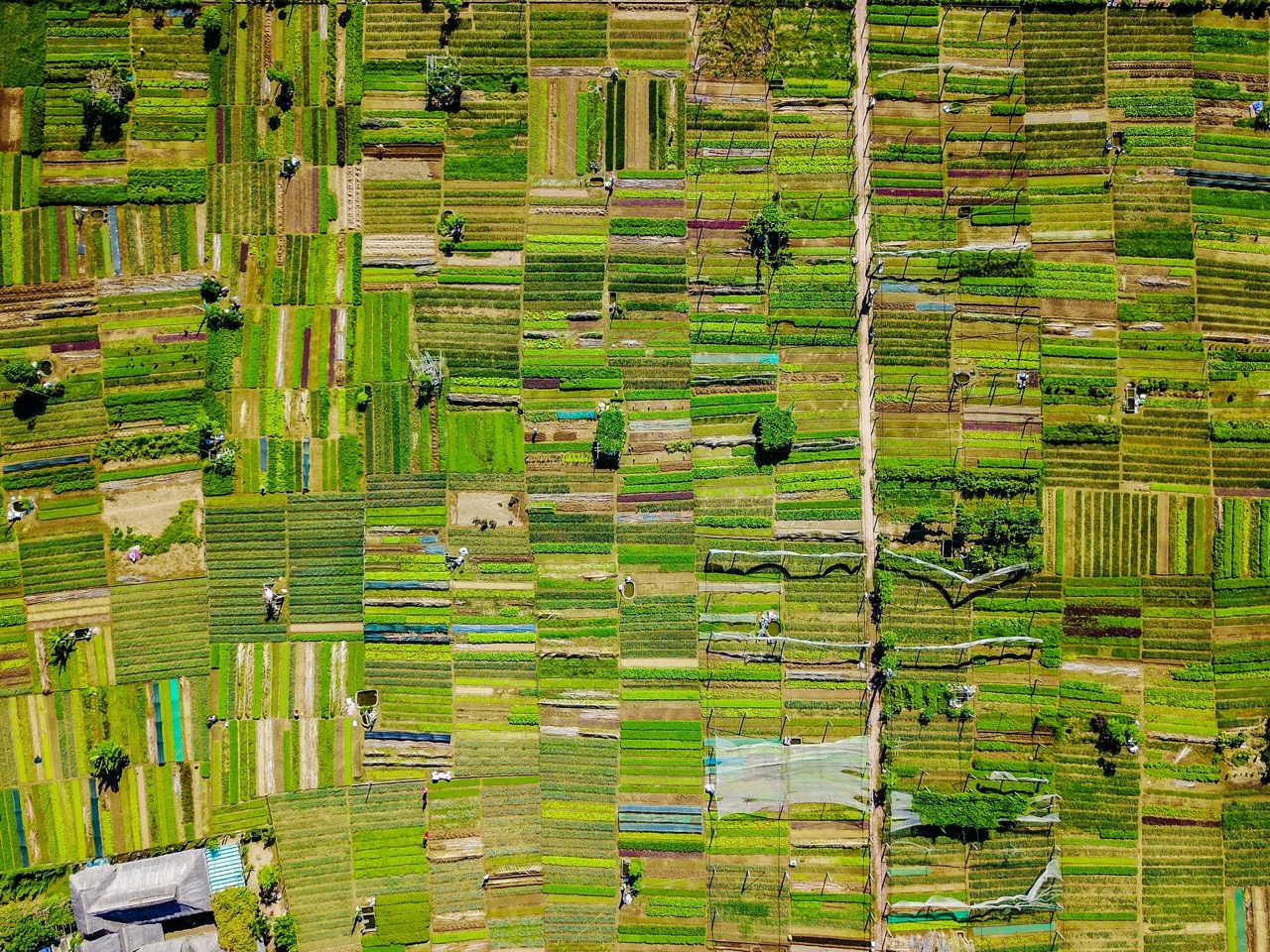2021: A World Facing Hunger
In 2020, 2.3 billion, or almost 30% of the world population, were without reliable access to a sufficient, affordable, and nutritious food supply. Of those facing food insecurity, it is estimated that 720-811 million people are facing hunger on an extreme level. Global hunger has been on the rise since 2014, and the pandemic has only exacerbated the extreme inequalities in food security across the world. While one in eight Americans and one in three people across the world are facing food insecurity, one third of the global food supply is lost or wasted each year. Bold systemic change throughout the global food system is essential to meet the UN's Sustainable Development Goals for Zero Hunger by 2030.
World Leaders Convene
The 2021 State of Food Security and Nutrition in the World (SOFI) was recently published by top global agencies such as the the Food and Agricultural Organization of the United Nations (FAO), and the World Health Organization (WHO) among others. The collaborative report details the grave extent of widespread hunger and food insecurity throughout the continents. Unfortunately, current global trends indicate a severe shortcoming in reaching the Zero Hunger 2030 goal, with the pandemic only exacerbating inequality and disrupting food supply chains across the globe.
.jpg)
Recently, leaders from over 100 countries convened both virtually and in person for the UN Food Systems Pre-Summit held in Rome. Poised to prepare for the first-ever UN Food Systems Summit this fall in New York City, the Pre-Summit centered around discussing solutions for food systems around the world in hopes to reach the UN’s Sustainable Development Goals. Specifically, the goals of the 2021 summit this fall focus on generating action and progress towards the 2030 Agenda for Sustainable Development.
Looking Ahead: Global Commitments to End Hunger
The most recent 2021 State of Food Security and Nutrition in the World (SOFI) report details the current inequalities plaguing the global food system, and places a spotlight on the drastic number of people affected this year. At the same time, it also highlights the steps that need to be taken to eliminate widespread hunger. The recommended food pathway transformation includes conflict resolution, poverty support, preparing food systems for climate change, changing food environments, and overall restructuring the food supply chain to enable healthy nutritious food more accessible to all. However, in order for any dramatic changes to occur, world leaders need to commit to change and begin taking action.
Through a series of five pathways, the Organization for Economic Cooperation and Development (OECD) has also identified a more succinct set of goals for food system transformation: to ensure access to safe and nutritious food for all, shift to sustainable consumption patterns, boost nature positive production, advance equitable livelihoods, and build resilience to vulnerabilities, shocks, and stress.
Nonetheless, tangible action and effective policy needs to be implemented to have any hopes of achieving these goals. The Pre-Summit created an opportunity to begin these conversations, also highlighting a focus on engaging all actors needed—from public and private sectors to government entities, farmers and youth—to create change. A portion of the pre-summit titled “Youth Priorities and Commitments for a Better Food System” included speakers from youth liaison groups who cited the importance of engaging the youth of today in activism and future solutions.
The Global Food System and the Economy
Engaging a multitude of sectors is essential for solving the international food crisis. The food system impacts every single person on the planet, and The World Bank estimates it represents 10% of the entire global economy.
Climate change, conflict, and high prices are some of the major drivers in keeping secure and healthy diets out of reach for families and individuals across the world.
While global production of food remains good despite external factors such as the COVID-19 pandemic, the agricultural commodity price index has increased by 30% since January of 2020.
High food price inflation at the retail level of food often reflects the lingering supply disruptions of the pandemic, social distancing, and currency devaluations. This in turn has a greater impact on the people in low- and middle-income countries who tend to spend a larger share of their income on food. This results in a loss in perishable food, such as fruits and vegetables, which have more nutritional value, and causes the general consumption to gravitate toward cheaper staples that have a longer shelf life.
2.37 billion people—approximately 30% of the global population—lacked access to adequate food in 2020. The upward trend in food insecurity and hunger further exacerbated the existing effects of extreme climate change, global conflict, and other economic shocks such as the locust outbreak which compounded the crisis in 23 countries.
The world’s current food insecurity is not driven by food shortages, supply disruptions, and inflation that affects agricultural inputs such as fertilizers and seeds, but the prolonged labor shortages currently driven by the pandemic could diminish next season’s crop and result in these issues to spiral.
The International Development Association within the World Bank has provided $5.3 billion in support of fighting food insecurity between April and September of 2020.
Food Security and Global Health
The lasting impact of food insecurity and hunger places additional burdens on young mothers and future generations. Low birth weights and stunted growth are prominent health issues that are pervasive in hunger stricken communities contributing to the cycle of poverty and continuing to inhibit human development.
Global Food Insecurity by the Numbers
.png)
While there are certain areas of the world where hunger is more widespread and acute, food insecurity pervades every country in every part of the world. A country’s average income or gross domestic product are often not reflective of the struggles of its food-insecure, food insecurity is a problem that needs to be solved based on all the people it currently impacts.
The United States versus Comparable Developed Nations
Hunger doesn’t discriminate based on a country’s GDP; even in wealthier nations, a large number of citizens are facing food insecurity. In 2012, an estimated 21.7% of Australian households and 15.7% of Japanese households faced food security, comparable to the 15% of US households. Canada and the European Union reported much lower rates of household food insecurity, at 7.7% and 8.7%, respectively. Poverty levels, social safety nets, and government spending on support systems like food banks all play a role in the variation seen among these nations.
The Farmlink Project acknowledges and strives to educate ourselves not only on the food insecurity that exists in the United States, but also globally. New teams have developed in Mexico and Canada to create Farmlink Deals across borders and take larger steps towards ending hunger.
Price Increases Trends that impacted the Food Supply
The United Nations Sustainable Development second goal is to attain Zero Hunger by 2030. While the world was on track to achieve this goal, in 2004, the prices for grains began to rise. The rising production was still unable to keep pace with the even stronger growth in demand, thus causing the prices to raise. Furthermore, disappointing harvests in major food producing countries coupled with increases in oil prices in 2007, caused fertilizer prices, and thus food production cost, to increase.
The ongoing cost escalation factors include production, storage, transport, distribution, and marketing. The UN has found that supporting small-scale producers who grow and sell more nutritious foods and securing their access to the markets, will eliminate the factor of competition with other large scale producers who are able to keep up with the increase in product price, due to all the customers who also have a high demand.
< Back
2021: A World Facing Hunger
In 2020, 2.3 billion, or almost 30% of the world population, were without reliable access to a sufficient, affordable, and nutritious food supply. Of those facing food insecurity, it is estimated that 720-811 million people are facing hunger on an extreme level. Global hunger has been on the rise since 2014, and the pandemic has only exacerbated the extreme inequalities in food security across the world. While one in eight Americans and one in three people across the world are facing food insecurity, one third of the global food supply is lost or wasted each year. Bold systemic change throughout the global food system is essential to meet the UN's Sustainable Development Goals for Zero Hunger by 2030.
World Leaders Convene
The 2021 State of Food Security and Nutrition in the World (SOFI) was recently published by top global agencies such as the the Food and Agricultural Organization of the United Nations (FAO), and the World Health Organization (WHO) among others. The collaborative report details the grave extent of widespread hunger and food insecurity throughout the continents. Unfortunately, current global trends indicate a severe shortcoming in reaching the Zero Hunger 2030 goal, with the pandemic only exacerbating inequality and disrupting food supply chains across the globe.
.jpg)
Recently, leaders from over 100 countries convened both virtually and in person for the UN Food Systems Pre-Summit held in Rome. Poised to prepare for the first-ever UN Food Systems Summit this fall in New York City, the Pre-Summit centered around discussing solutions for food systems around the world in hopes to reach the UN’s Sustainable Development Goals. Specifically, the goals of the 2021 summit this fall focus on generating action and progress towards the 2030 Agenda for Sustainable Development.
Looking Ahead: Global Commitments to End Hunger
The most recent 2021 State of Food Security and Nutrition in the World (SOFI) report details the current inequalities plaguing the global food system, and places a spotlight on the drastic number of people affected this year. At the same time, it also highlights the steps that need to be taken to eliminate widespread hunger. The recommended food pathway transformation includes conflict resolution, poverty support, preparing food systems for climate change, changing food environments, and overall restructuring the food supply chain to enable healthy nutritious food more accessible to all. However, in order for any dramatic changes to occur, world leaders need to commit to change and begin taking action.
Through a series of five pathways, the Organization for Economic Cooperation and Development (OECD) has also identified a more succinct set of goals for food system transformation: to ensure access to safe and nutritious food for all, shift to sustainable consumption patterns, boost nature positive production, advance equitable livelihoods, and build resilience to vulnerabilities, shocks, and stress.
Nonetheless, tangible action and effective policy needs to be implemented to have any hopes of achieving these goals. The Pre-Summit created an opportunity to begin these conversations, also highlighting a focus on engaging all actors needed—from public and private sectors to government entities, farmers and youth—to create change. A portion of the pre-summit titled “Youth Priorities and Commitments for a Better Food System” included speakers from youth liaison groups who cited the importance of engaging the youth of today in activism and future solutions.
The Global Food System and the Economy
Engaging a multitude of sectors is essential for solving the international food crisis. The food system impacts every single person on the planet, and The World Bank estimates it represents 10% of the entire global economy.
Climate change, conflict, and high prices are some of the major drivers in keeping secure and healthy diets out of reach for families and individuals across the world.
While global production of food remains good despite external factors such as the COVID-19 pandemic, the agricultural commodity price index has increased by 30% since January of 2020.
High food price inflation at the retail level of food often reflects the lingering supply disruptions of the pandemic, social distancing, and currency devaluations. This in turn has a greater impact on the people in low- and middle-income countries who tend to spend a larger share of their income on food. This results in a loss in perishable food, such as fruits and vegetables, which have more nutritional value, and causes the general consumption to gravitate toward cheaper staples that have a longer shelf life.
2.37 billion people—approximately 30% of the global population—lacked access to adequate food in 2020. The upward trend in food insecurity and hunger further exacerbated the existing effects of extreme climate change, global conflict, and other economic shocks such as the locust outbreak which compounded the crisis in 23 countries.
The world’s current food insecurity is not driven by food shortages, supply disruptions, and inflation that affects agricultural inputs such as fertilizers and seeds, but the prolonged labor shortages currently driven by the pandemic could diminish next season’s crop and result in these issues to spiral.
The International Development Association within the World Bank has provided $5.3 billion in support of fighting food insecurity between April and September of 2020.
Food Security and Global Health
The lasting impact of food insecurity and hunger places additional burdens on young mothers and future generations. Low birth weights and stunted growth are prominent health issues that are pervasive in hunger stricken communities contributing to the cycle of poverty and continuing to inhibit human development.
Global Food Insecurity by the Numbers
.png)
While there are certain areas of the world where hunger is more widespread and acute, food insecurity pervades every country in every part of the world. A country’s average income or gross domestic product are often not reflective of the struggles of its food-insecure, food insecurity is a problem that needs to be solved based on all the people it currently impacts.
The United States versus Comparable Developed Nations
Hunger doesn’t discriminate based on a country’s GDP; even in wealthier nations, a large number of citizens are facing food insecurity. In 2012, an estimated 21.7% of Australian households and 15.7% of Japanese households faced food security, comparable to the 15% of US households. Canada and the European Union reported much lower rates of household food insecurity, at 7.7% and 8.7%, respectively. Poverty levels, social safety nets, and government spending on support systems like food banks all play a role in the variation seen among these nations.
The Farmlink Project acknowledges and strives to educate ourselves not only on the food insecurity that exists in the United States, but also globally. New teams have developed in Mexico and Canada to create Farmlink Deals across borders and take larger steps towards ending hunger.
Price Increases Trends that impacted the Food Supply
The United Nations Sustainable Development second goal is to attain Zero Hunger by 2030. While the world was on track to achieve this goal, in 2004, the prices for grains began to rise. The rising production was still unable to keep pace with the even stronger growth in demand, thus causing the prices to raise. Furthermore, disappointing harvests in major food producing countries coupled with increases in oil prices in 2007, caused fertilizer prices, and thus food production cost, to increase.
The ongoing cost escalation factors include production, storage, transport, distribution, and marketing. The UN has found that supporting small-scale producers who grow and sell more nutritious foods and securing their access to the markets, will eliminate the factor of competition with other large scale producers who are able to keep up with the increase in product price, due to all the customers who also have a high demand.
Food Insecurity: A Global Crisis
2021: A World Facing Hunger
In 2020, 2.3 billion, or almost 30% of the world population, were without reliable access to a sufficient, affordable, and nutritious food supply. Of those facing food insecurity, it is estimated that 720-811 million people are facing hunger on an extreme level. Global hunger has been on the rise since 2014, and the pandemic has only exacerbated the extreme inequalities in food security across the world. While one in eight Americans and one in three people across the world are facing food insecurity, one third of the global food supply is lost or wasted each year. Bold systemic change throughout the global food system is essential to meet the UN's Sustainable Development Goals for Zero Hunger by 2030.
World Leaders Convene
The 2021 State of Food Security and Nutrition in the World (SOFI) was recently published by top global agencies such as the the Food and Agricultural Organization of the United Nations (FAO), and the World Health Organization (WHO) among others. The collaborative report details the grave extent of widespread hunger and food insecurity throughout the continents. Unfortunately, current global trends indicate a severe shortcoming in reaching the Zero Hunger 2030 goal, with the pandemic only exacerbating inequality and disrupting food supply chains across the globe.
.jpg)
Recently, leaders from over 100 countries convened both virtually and in person for the UN Food Systems Pre-Summit held in Rome. Poised to prepare for the first-ever UN Food Systems Summit this fall in New York City, the Pre-Summit centered around discussing solutions for food systems around the world in hopes to reach the UN’s Sustainable Development Goals. Specifically, the goals of the 2021 summit this fall focus on generating action and progress towards the 2030 Agenda for Sustainable Development.
Looking Ahead: Global Commitments to End Hunger
The most recent 2021 State of Food Security and Nutrition in the World (SOFI) report details the current inequalities plaguing the global food system, and places a spotlight on the drastic number of people affected this year. At the same time, it also highlights the steps that need to be taken to eliminate widespread hunger. The recommended food pathway transformation includes conflict resolution, poverty support, preparing food systems for climate change, changing food environments, and overall restructuring the food supply chain to enable healthy nutritious food more accessible to all. However, in order for any dramatic changes to occur, world leaders need to commit to change and begin taking action.
Through a series of five pathways, the Organization for Economic Cooperation and Development (OECD) has also identified a more succinct set of goals for food system transformation: to ensure access to safe and nutritious food for all, shift to sustainable consumption patterns, boost nature positive production, advance equitable livelihoods, and build resilience to vulnerabilities, shocks, and stress.
Nonetheless, tangible action and effective policy needs to be implemented to have any hopes of achieving these goals. The Pre-Summit created an opportunity to begin these conversations, also highlighting a focus on engaging all actors needed—from public and private sectors to government entities, farmers and youth—to create change. A portion of the pre-summit titled “Youth Priorities and Commitments for a Better Food System” included speakers from youth liaison groups who cited the importance of engaging the youth of today in activism and future solutions.
The Global Food System and the Economy
Engaging a multitude of sectors is essential for solving the international food crisis. The food system impacts every single person on the planet, and The World Bank estimates it represents 10% of the entire global economy.
Climate change, conflict, and high prices are some of the major drivers in keeping secure and healthy diets out of reach for families and individuals across the world.
While global production of food remains good despite external factors such as the COVID-19 pandemic, the agricultural commodity price index has increased by 30% since January of 2020.
High food price inflation at the retail level of food often reflects the lingering supply disruptions of the pandemic, social distancing, and currency devaluations. This in turn has a greater impact on the people in low- and middle-income countries who tend to spend a larger share of their income on food. This results in a loss in perishable food, such as fruits and vegetables, which have more nutritional value, and causes the general consumption to gravitate toward cheaper staples that have a longer shelf life.
2.37 billion people—approximately 30% of the global population—lacked access to adequate food in 2020. The upward trend in food insecurity and hunger further exacerbated the existing effects of extreme climate change, global conflict, and other economic shocks such as the locust outbreak which compounded the crisis in 23 countries.
The world’s current food insecurity is not driven by food shortages, supply disruptions, and inflation that affects agricultural inputs such as fertilizers and seeds, but the prolonged labor shortages currently driven by the pandemic could diminish next season’s crop and result in these issues to spiral.
The International Development Association within the World Bank has provided $5.3 billion in support of fighting food insecurity between April and September of 2020.
Food Security and Global Health
The lasting impact of food insecurity and hunger places additional burdens on young mothers and future generations. Low birth weights and stunted growth are prominent health issues that are pervasive in hunger stricken communities contributing to the cycle of poverty and continuing to inhibit human development.
Global Food Insecurity by the Numbers
.png)
While there are certain areas of the world where hunger is more widespread and acute, food insecurity pervades every country in every part of the world. A country’s average income or gross domestic product are often not reflective of the struggles of its food-insecure, food insecurity is a problem that needs to be solved based on all the people it currently impacts.
The United States versus Comparable Developed Nations
Hunger doesn’t discriminate based on a country’s GDP; even in wealthier nations, a large number of citizens are facing food insecurity. In 2012, an estimated 21.7% of Australian households and 15.7% of Japanese households faced food security, comparable to the 15% of US households. Canada and the European Union reported much lower rates of household food insecurity, at 7.7% and 8.7%, respectively. Poverty levels, social safety nets, and government spending on support systems like food banks all play a role in the variation seen among these nations.
The Farmlink Project acknowledges and strives to educate ourselves not only on the food insecurity that exists in the United States, but also globally. New teams have developed in Mexico and Canada to create Farmlink Deals across borders and take larger steps towards ending hunger.
Price Increases Trends that impacted the Food Supply
The United Nations Sustainable Development second goal is to attain Zero Hunger by 2030. While the world was on track to achieve this goal, in 2004, the prices for grains began to rise. The rising production was still unable to keep pace with the even stronger growth in demand, thus causing the prices to raise. Furthermore, disappointing harvests in major food producing countries coupled with increases in oil prices in 2007, caused fertilizer prices, and thus food production cost, to increase.
The ongoing cost escalation factors include production, storage, transport, distribution, and marketing. The UN has found that supporting small-scale producers who grow and sell more nutritious foods and securing their access to the markets, will eliminate the factor of competition with other large scale producers who are able to keep up with the increase in product price, due to all the customers who also have a high demand.
.png)
.jpg)






.svg)
.svg)
.svg)